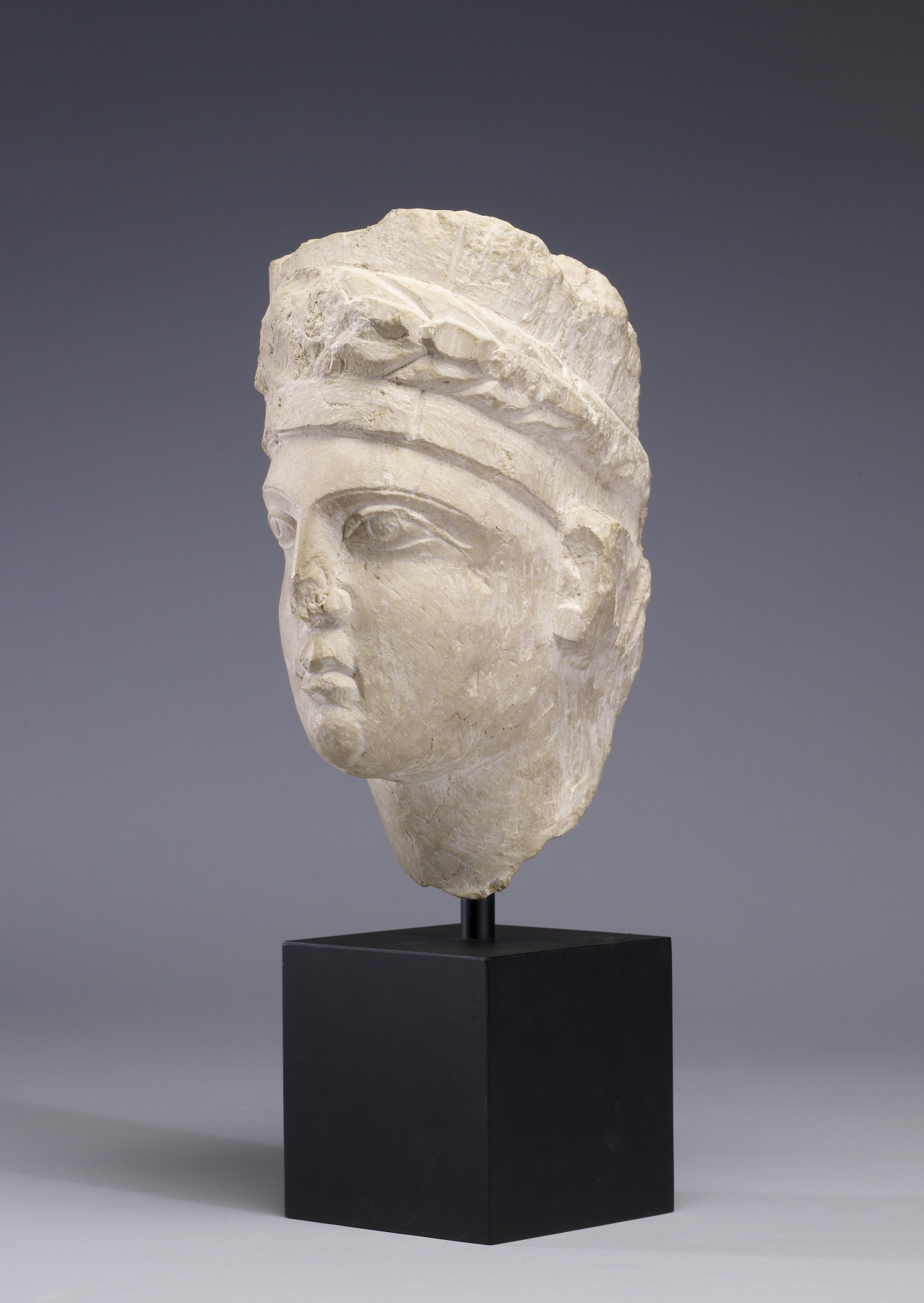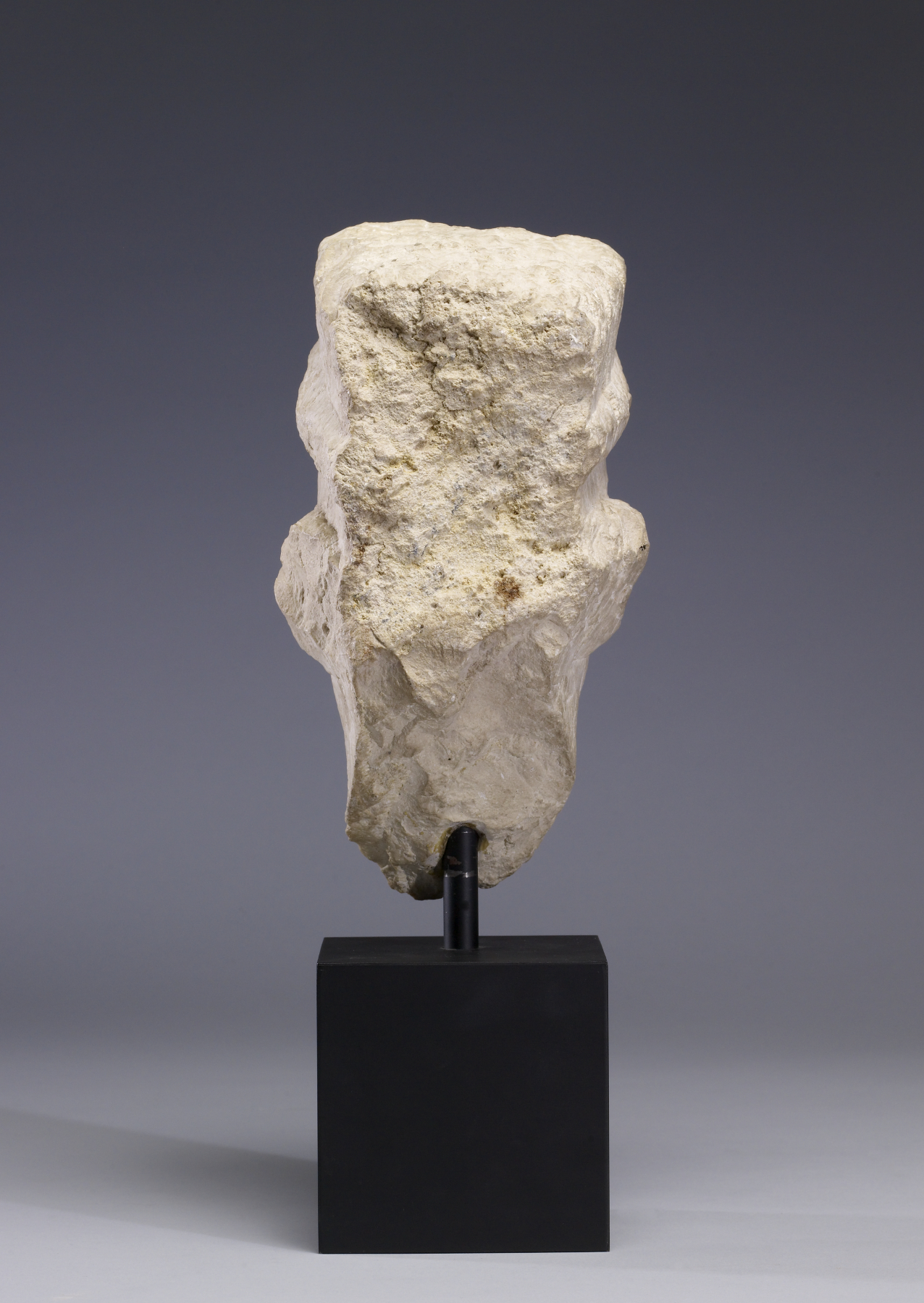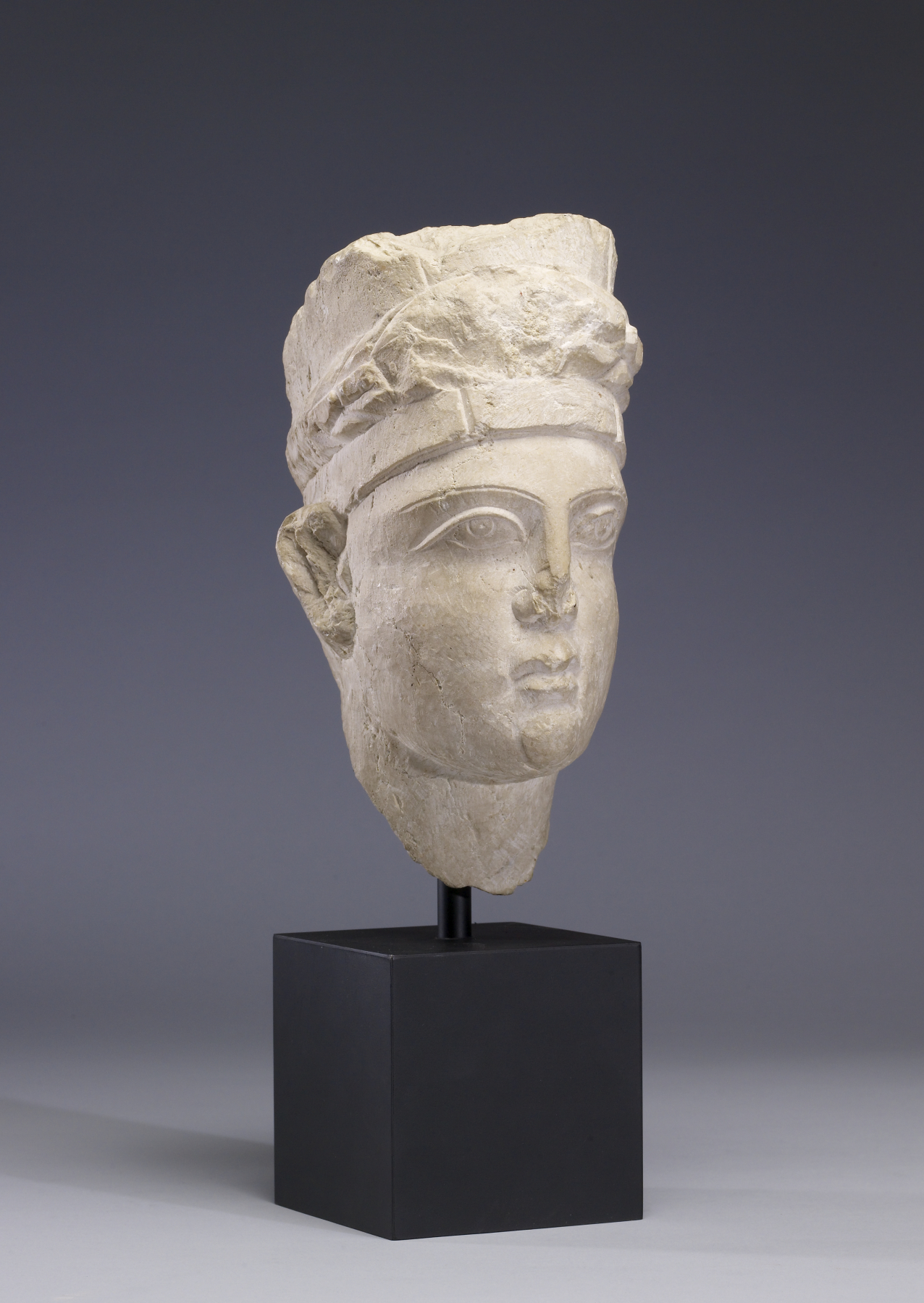Funerary Relief of a Priest
(Ancient Near East )
The slightly under life-size portrait is carved in a distinctive style native to Palmyra, Syria, under the Roman Empire. While the head was once part of a relief, it was carved almost fully in the round. The figure’s pursed lips are offset by protruding ears and large, stylized eyes with engraved irises and pupils. However, the figure is identifiable as a priest by his cylindrical headdress, which is divided into three sections and wrapped in a thick woven band. There are more than 3,000 Palmyrene funerary portrait sculptures currently extant. This is the largest corpus of portraiture in the Roman world outside of the city of Rome, and as such it provides valuable information about self-representation and identity in the Roman provinces.
Provenance
Provenance (from the French provenir, 'to come from/forth') is the chronology of the ownership, custody, or location of a historical object. Learn more about provenance at the Walters.
Arthur Houghton, Cockeysville, Maryland, by 1965, by purchase; Walters Art Museum, 2008, by gift.
Exhibitions
| 2008 | Faces of Ancient Arabia: The Giraud and Carolyn Foster Collection of South Arabian Art. The Walters Art Museum, Baltimore. |
Geographies
Syria, Palmyra (Place of Origin)
Measurements
H: 9 7/16 × W: 4 5/16 × D: 5 1/8 in. (24 × 11 × 13 cm)
Credit Line
Gift of Mr. Arthur Houghton, 2008
Location in Museum
Not on view
Accession Number
In libraries, galleries, museums, and archives, an accession number is a unique identifier assigned to each object in the collection.
In libraries, galleries, museums, and archives, an accession number is a unique identifier assigned to each object in the collection.
22.475








